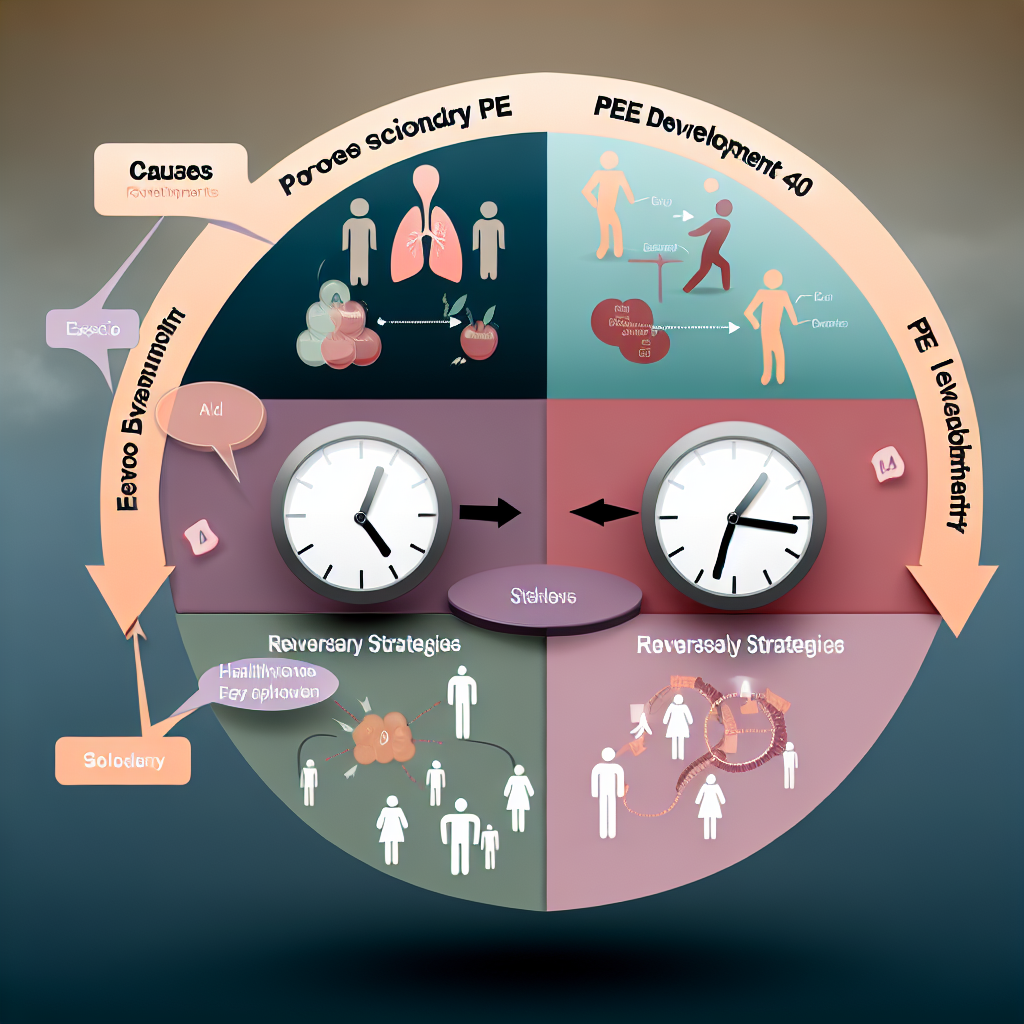Secondary PE Development: Causes and Reversal Strategies After 40
Introduction: Understanding Secondary Premature Ejaculation After 40
For many men, maintaining optimal sexual health is essential to overall well-being and self-confidence. One common — and often overlooked — issue that can affect this is premature ejaculation (PE). While commonly associated with young men, a growing number of men over 40 are experiencing what’s known as secondary premature ejaculation (SPE) — the sudden onset of PE despite previously normal ejaculatory control.
Unlike lifelong PE, which is typically rooted in early-life neurological or psychological patterns, secondary PE emerges later due to identifiable factors — including stress, aging, hormonal imbalances, and lifestyle shifts. These can be confusing and distressing for men who once had consistent sexual performance.
Physiological changes such as a drop in testosterone, increased stress levels, prostate issues, and certain medications can all contribute to SPE. Understanding the root causes is the first step toward effective treatment and improved sexual health.
Why It Happens: The Root Causes of Secondary PE in Men Over 40
Men over 40 often experience increased emotional and physical stress due to life transitions like career pressures, health concerns, and family obligations. This stress can lead to elevated anxiety and depression — two major contributors to ejaculatory dysfunction.
Additionally, physical conditions such as erectile dysfunction (ED), high blood pressure, diabetes, and chronic prostate issues can adversely affect ejaculatory timing. Poor diet, inactivity, alcohol consumption, and irregular sleep further exacerbate these issues.
PE becomes a psychological and physical cycle: stress hinders performance, creating anxiety, which in turn worsens PE symptoms. Identifying and targeting this cycle is vital for recovery.
Expert Perspectives: Medical Insights Behind Secondary Premature Ejaculation
Medical experts now recognize secondary PE as a distinct condition. According to the American Urological Association, PE affects up to 30% of men, with increasing cases in those over 40.
A 2016 study in the International Journal of Impotence Research links prostate inflammation and BPH to SPE by impacting ejaculatory pathways. Similarly, andropause or low testosterone disrupts serotonin levels, directly affecting ejaculation control.
Moreover, up to 50% of men with PE have some level of ED, according to the Journal of Sexual Medicine. Rushing sex due to performance anxiety often worsens the issue. Prescription medications — like SSRIs, ADHD stimulants, and blood pressure pills — may also impair sexual function. Conversely, SSRI withdrawal can also trigger increased sensitivity and PE.
Finally, psychological conditions like performance anxiety create constant nervous anticipation, speeding up climax and reinforcing negative behavior patterns.
Science-Backed Solutions: How to Reverse Secondary PE Over 40
Treating secondary premature ejaculation requires a personalized mix of therapy, physical training, medical intervention, and lifestyle adjustments. Below are proven solutions that help restore control and confidence:
1. Pelvic Floor Muscle Training
Research has shown that pelvic floor exercises significantly delay ejaculation. A 2021 study found men who adhered to a 12-week regimen of targeted strengthening exercises regained better ejaculatory control and sexual stamina.
2. Cognitive Behavioral Therapy (CBT)
CBT directly addresses anxiety and sexual dysfunction. It helps retrain thought patterns associated with premature climax by enhancing emotional regulation, self-awareness, and confidence, especially when paired with other therapies.
3. Selective Serotonin Reuptake Inhibitors (SSRIs)
Certain SSRIs like sertraline and paroxetine are commonly prescribed off-label for SPE. They increase serotonin in the brain, which prolongs the time to ejaculation, offering relief for many men. Always consult with a doctor before starting any medication.
4. Topical Anesthetics
Lidocaine-prilocaine creams or sprays numb the glans (penile head), helping reduce overstimulation. These topical treatments offer on-demand, chemical-free management of sensitivity-related PE when applied correctly before intercourse.
5. Testosterone Replacement Therapy (TRT)
When tests confirm low testosterone, TRT can be a game-changer. It boosts mood, energy, and sexual function. However, hormone therapy should be approached with caution and only under the guidance of a urologist or endocrinologist, due to cardiovascular and fertility risks.
6. Lifestyle Overhaul: A Powerful Natural Remedy
Regular exercise, nutrient-rich diets, quality sleep, and reduced alcohol intake can drastically improve sex drive and control. Daily movement boosts blood circulation and hormonal balance. Incorporating stress-reduction practices like mindfulness, yoga, and deep breathing calms the nervous system, directly influencing sexual performance.
7. Couples Counseling or Sex Therapy
Factors such as miscommunication, emotional disconnect, or unresolved issues can fuel psychological PE. Certified sex therapists help couples explore intimacy challenges, rebuild connection, and restore mutual sexual satisfaction.
Conclusion: You’re Not Alone — And Recovery Is Possible
Secondary premature ejaculation after 40 is a common, treatable condition. It often arises from age-related physiological changes, psychological stress, and lifestyle factors. The good news? SPE is not a reflection of your masculinity — it’s a manageable side effect of aging.
By targeting underlying issues — such as hormone imbalance, psychological stress, or prostate health — men can regain satisfaction and confidence through proven strategies like pelvic exercises, therapy, medical treatments, and improved lifestyle habits.
With support from professionals and clear action steps, full recovery is absolutely within reach.
Resources and References
– International Journal of Impotence Research (2016 Study)
– The Aging Male – Low Testosterone and Sexual Function
– Journal of Sexual Medicine – ED and PE Co-occurrence
– Therapeutic Advances in Urology (2020 Review)
– American Urological Association (PE Guidelines)
Summary
Secondary premature ejaculation (SPE) after 40 is increasingly common and results from physical, hormonal, and psychological changes such as low testosterone, prostatitis, emotional stress, and medication side effects. This condition can feel debilitating, but reversal is highly achievable through tailored strategies like pelvic floor exercises, SSRIs, therapy, TRT, and lifestyle improvements. By identifying root causes and using science-backed solutions, men can restore control, confidence, and intimacy. Seeking professional support and making informed lifestyle changes are critical first steps toward sustainable recovery and overall sexual well-being.
Add relevant tags to boost SEO: men’s health, sexual wellness, premature ejaculation, male performance, testosterone, erectile dysfunction, andropause, sexual therapy.

Dominic E. is a passionate filmmaker navigating the exciting intersection of art and science. By day, he delves into the complexities of the human body as a full-time medical writer, meticulously translating intricate medical concepts into accessible and engaging narratives. By night, he explores the boundless realm of cinematic storytelling, crafting narratives that evoke emotion and challenge perspectives. Film Student and Full-time Medical Writer for ContentVendor.com




